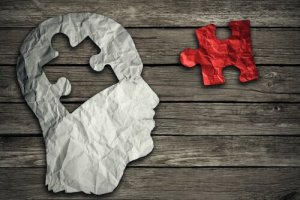The Differences Between Personality, Temperament, and Character


Written and verified by the psychologist Gema Sánchez Cuevas
Personality, temperament, and character are three 3 concepts that are used in psychology to talk about different ways of feeling and thinking, which is why they’re very linked together. But that similarity often confuses people about their meanings.
So you can use the terms personality, temperament, and character in the right way, we’re going to try to very simply flesh out these three terms. But before we start to look at their differences, you have to remember that temperament and character are parts of personality, meaning they’re both fundamental parts of it.
Personality, temperament, and character are concepts that are used in psychology to talk about different ways of feeling and thinking.
Temperament: the foundation
Temperament is the natural part of your personality that comes from your genes. And that’s why we see it as the biological and instinctive part of personality. In fact, it’s the part of your personality that always shows up first.
You can even see different temperaments in babies. For example, some babies are more likely to show and feel positive emotions or negative ones. Some babies are more likely to have a good mood or a bad mood. In behavioral terms, we call these babies “easier” or “more difficult.”
Because it’s genetic and comes from your inherited traits, temperament is hard to modify, manipulate, or change. In some way or another, that tendency will always be there. But that doesn’t mean you can’t make an effort to encourage it or stop yourself from doing it.
If you were an iceberg, it would be part of the bit that’s underwater. And that would mean that you can still take some control over how it comes up in the bit that sticks out of the water.

Hippocrates and Galen: the humors
Hippocrates was an Ancient Greek doctor. His theory of the 4 humors was one of the first that tried to explain the idea of temperament. He thought a person’s personality and their health both depended on a balance of 4 different substances: yellow bile, black bile, phlegm, and blood. He called them the boily humors.
Centuries later, Galen of Pergamon took Hippocrates’ idea further to categorize people according to their temperaments and came up with 4 types of people:
- Choleric (yellow bile): passionate and energetic people who get angry quickly.
- Melancholic (black bile): sad people who get upset easily and have a great artistic sensibility.
- Phlegmatic (phlegm): cold and rational people.
- Sanguine (blood): happy and optimistic people who express affection towards other people and are sure of themselves.
Character: the reflection of your experiences
This is the aspect of personality that includes temperament (inherited traits) and the social and educational habits that you’ve learned. That is, it’s both a natural component of personality and one you learn.
Character is the part of you that comes from your environment.
It’s also a result of the experiences and social interactions in your life, the ones you learn lessons from. And that makes it so these habits have an influence on your temperament and biological predispositions.
The habits also adjust those predispositions and polish them, shaping your personality. That’s why the character’s roots are in culture.
Character isn’t as stable as temperament. Because it’s not genetic, it doesn’t show up fully in the early stages of development. It actually goes through different stages and takes its fullest form during adolescence.
That’s also why you can modify it and make changes to it, for example, through social education. People nowadays tend to mix this term up with personality, so it’s very common for people to use them in the exact same way.
Personality: biology and environment
Personality comes from adding up character (temperament and learned habits) and behavior. This means it includes both of these things at the same time. And that connection is also what makes it easier to clear up the differences between personality, temperament, and character.
This is why you can’t just look at it as a product of genetic inheritance. It’s also a result of the environmental influences swirling around a person. Personality is something that distinguishes individuals, which means it’s characteristic of each person.
And according to many studies, it’s stable over time and through different situations.
“Each person is an idiom unto himself, an apparent violation of the syntax of the species.”
-Gordon Allport-

Defining personality
In psychology, personality is the group of emotions, perceptions, and actions that form a persons’ behavioral patterns. It’s the way you feel, think, or act. It’s a group of processes that interact with each other, regulate themselves, and shape a dynamic system. The two most widely used and accepted definitions in psychology right now are:
- “Personality is the total sum of an organism’s behavioral patterns (current or potential) determined by genetics and environment.” Hans Eysenck (1947).
- “Personality is the typical behavioral patterns (including emotions and thoughts) that characterize a person’s adaptation to the events of life.” Walter Mischel (1976).
But there’s no single, clear definition of what personality is. And that’s because it’s a complex system and there are as many definitions as there are theorists and trends. Every philosophy or theory has its vision and its concept, and they’re always similar but also slightly different.
However, they all have one thing in common: they think there’s a specific pattern in everyone that leads people to behave in similar ways in similar situations. Of course, there are a lot of variables that enter into this pattern and shape it.
These variables get different names depending on the trend: characteristic, matter, parts, traits…The main thing is that the richness of the psychology of personality comes from all these contributions, theories, studies, and research. And even more so when they get brought together.
Personality, temperament, and character are different concepts. But it’s in that difference that you can find part of their value. In the end, they can help you understand your behavior and you can use them to try and predict it.
Personality, temperament, and character are three 3 concepts that are used in psychology to talk about different ways of feeling and thinking, which is why they’re very linked together. But that similarity often confuses people about their meanings.
So you can use the terms personality, temperament, and character in the right way, we’re going to try to very simply flesh out these three terms. But before we start to look at their differences, you have to remember that temperament and character are parts of personality, meaning they’re both fundamental parts of it.
Personality, temperament, and character are concepts that are used in psychology to talk about different ways of feeling and thinking.
Temperament: the foundation
Temperament is the natural part of your personality that comes from your genes. And that’s why we see it as the biological and instinctive part of personality. In fact, it’s the part of your personality that always shows up first.
You can even see different temperaments in babies. For example, some babies are more likely to show and feel positive emotions or negative ones. Some babies are more likely to have a good mood or a bad mood. In behavioral terms, we call these babies “easier” or “more difficult.”
Because it’s genetic and comes from your inherited traits, temperament is hard to modify, manipulate, or change. In some way or another, that tendency will always be there. But that doesn’t mean you can’t make an effort to encourage it or stop yourself from doing it.
If you were an iceberg, it would be part of the bit that’s underwater. And that would mean that you can still take some control over how it comes up in the bit that sticks out of the water.

Hippocrates and Galen: the humors
Hippocrates was an Ancient Greek doctor. His theory of the 4 humors was one of the first that tried to explain the idea of temperament. He thought a person’s personality and their health both depended on a balance of 4 different substances: yellow bile, black bile, phlegm, and blood. He called them the boily humors.
Centuries later, Galen of Pergamon took Hippocrates’ idea further to categorize people according to their temperaments and came up with 4 types of people:
- Choleric (yellow bile): passionate and energetic people who get angry quickly.
- Melancholic (black bile): sad people who get upset easily and have a great artistic sensibility.
- Phlegmatic (phlegm): cold and rational people.
- Sanguine (blood): happy and optimistic people who express affection towards other people and are sure of themselves.
Character: the reflection of your experiences
This is the aspect of personality that includes temperament (inherited traits) and the social and educational habits that you’ve learned. That is, it’s both a natural component of personality and one you learn.
Character is the part of you that comes from your environment.
It’s also a result of the experiences and social interactions in your life, the ones you learn lessons from. And that makes it so these habits have an influence on your temperament and biological predispositions.
The habits also adjust those predispositions and polish them, shaping your personality. That’s why the character’s roots are in culture.
Character isn’t as stable as temperament. Because it’s not genetic, it doesn’t show up fully in the early stages of development. It actually goes through different stages and takes its fullest form during adolescence.
That’s also why you can modify it and make changes to it, for example, through social education. People nowadays tend to mix this term up with personality, so it’s very common for people to use them in the exact same way.
Personality: biology and environment
Personality comes from adding up character (temperament and learned habits) and behavior. This means it includes both of these things at the same time. And that connection is also what makes it easier to clear up the differences between personality, temperament, and character.
This is why you can’t just look at it as a product of genetic inheritance. It’s also a result of the environmental influences swirling around a person. Personality is something that distinguishes individuals, which means it’s characteristic of each person.
And according to many studies, it’s stable over time and through different situations.
“Each person is an idiom unto himself, an apparent violation of the syntax of the species.”
-Gordon Allport-

Defining personality
In psychology, personality is the group of emotions, perceptions, and actions that form a persons’ behavioral patterns. It’s the way you feel, think, or act. It’s a group of processes that interact with each other, regulate themselves, and shape a dynamic system. The two most widely used and accepted definitions in psychology right now are:
- “Personality is the total sum of an organism’s behavioral patterns (current or potential) determined by genetics and environment.” Hans Eysenck (1947).
- “Personality is the typical behavioral patterns (including emotions and thoughts) that characterize a person’s adaptation to the events of life.” Walter Mischel (1976).
But there’s no single, clear definition of what personality is. And that’s because it’s a complex system and there are as many definitions as there are theorists and trends. Every philosophy or theory has its vision and its concept, and they’re always similar but also slightly different.
However, they all have one thing in common: they think there’s a specific pattern in everyone that leads people to behave in similar ways in similar situations. Of course, there are a lot of variables that enter into this pattern and shape it.
These variables get different names depending on the trend: characteristic, matter, parts, traits…The main thing is that the richness of the psychology of personality comes from all these contributions, theories, studies, and research. And even more so when they get brought together.
Personality, temperament, and character are different concepts. But it’s in that difference that you can find part of their value. In the end, they can help you understand your behavior and you can use them to try and predict it.
This text is provided for informational purposes only and does not replace consultation with a professional. If in doubt, consult your specialist.







